Trinidad & Ludlow - Historic Southern Colorado
Friday, August 07, 2009
 Trinidad, Colorado, United States
Trinidad, Colorado, United States
It feels as though I’ve mostly been doing day trips from
Denver for quite a while . That’s made me feel a little stir crazy, and what’s
keeping me cooped-up in town anyway? After all, I returned to Colorado to get
out into the wilderness and lead an active life in the mountains. What I’m in
the mood for is to climb a mountain in a different part of the state than I’ve
hiked in before, and after all the years I lived in Colorado there are still
many such places. After consulting maps and hiking trail guidebooks as well as
online sites, I decided on a road trip of three to four days in southern
Colorado built around hiking/climbing West Spanish Peak during what looks like
a good weather window of opportunity with low thunderstorm risk.
Southern Colorado is a place I usually only travel through
quickly on I-25 on the way to New Mexico. Read a bit about Colorado history,
though, and you’ll find that there are several notable towns in the area where
some significant historical events took place. My first brief stop was in
Walsenburg, the seat of Huerfano County and a town with a few architecturally
notable buildings like the Huerfano County Courthouse. From there south I took
backroads that paralleled the Interstate rather than the highway itself – why take
the same road twice if you can possibly avoid doing so?
Las Animas County is one of the largest physically in
Colorado but also one of the least populated. That wasn’t always the case. If
you look at historical population figures from the Census Bureau, around the
turn of the twentieth century Las Animas was Colorado’s fourth most populous
county after Denver, Pueblo, and Weld with about four times as many people as
it currently contains . Why such a large population and then massive decline?
Well, around a century ago the region around Trinidad was a major coal mining
center. Once the coal was gone or became uneconomical to extract there was
little work and mostly European immigrant population left the area for places
where there were jobs.
It was around coal mining that the region’s best known
historical event took place, the so-called Ludlow Massacre, the April 20, 1914
attack on a tent camp of 1,200 striking coal miners by the National Guard which
left approximately two dozen dead. The event was the bloodiest in a year-long
strike by the United Mine Workers against mines in southern Colorado that
resulted in almost 200 deaths overall. While back then Ludlow was a town of 900
residents, nowadays all there is at Ludlow is a monument commemorating the massacre
and memorializing those who died in the violence.
Nowadays the town of Trinidad, the last one along the
interstate in Colorado on the way to New Mexico, has around 9,000 residents,
but it seems like a much bigger and grander place than most towns of that size .
That’s, or course, because it once had about twice as many people and was the
center of a more populous mining region. There aren’t too many towns of its
current size which have some many attractive old historic buildings in their
downtowns or such a selection of historic homes from the Victorian era which
can be toured. I spent most of the afternoon wandering around Trinidad and
touring several of them, including the Baca House which contains the Trinidad
History Museum and the Bloom House, one of the town’s most opulent Victorian
structures.
Other Entries
-
1Arapahoe Glacier and Lost Lake -Indian Peaks Hikes
Sep 27314 days prior Eldora, United Statesphoto_camera34videocam 0comment 0
Eldora, United Statesphoto_camera34videocam 0comment 0 -
2Two Kellythons in Rocky Mountain National Park
Oct 04307 days prior Rocky Mountain National Park, United Statesphoto_camera62videocam 0comment 0
Rocky Mountain National Park, United Statesphoto_camera62videocam 0comment 0 -
3Clark Peak Hike - Remote Far Northern Colorado
Oct 19292 days prior Gould, United Statesphoto_camera38videocam 0comment 0
Gould, United Statesphoto_camera38videocam 0comment 0 -
4Mount Audubon Hike - Indian Peaks Wilderness
Oct 29282 days prior Ward, United Statesphoto_camera21videocam 0comment 0
Ward, United Statesphoto_camera21videocam 0comment 0 -
5Waterton Canyon Bike Ride - So Close to Denver
Nov 24256 days prior Waterton, United Statesphoto_camera38videocam 0comment 0
Waterton, United Statesphoto_camera38videocam 0comment 0 -
6Two Cycling "Kellythons" in Front Range Foothills
Mar 04156 days prior Gold Hill, United Statesphoto_camera9videocam 0comment 0
Gold Hill, United Statesphoto_camera9videocam 0comment 0 -
7Brian's Visit to Denver
May 3069 days prior Denver, United Statesphoto_camera15videocam 0comment 0
Denver, United Statesphoto_camera15videocam 0comment 0 -
8Bear Peak/Flatirons Hike with Myra
Jun 2147 days prior Boulder, United Statesphoto_camera20videocam 0comment 0
Boulder, United Statesphoto_camera20videocam 0comment 0 -
9Pawnee Buttes - Sentinels on the Plains
Jul 1622 days prior Keota, United Statesphoto_camera21videocam 0comment 0
Keota, United Statesphoto_camera21videocam 0comment 0 -
10Cheyenne Frontier Days - Daddy of Them All
Jul 2513 days prior Cheyenne, United Statesphoto_camera20videocam 0comment 0
Cheyenne, United Statesphoto_camera20videocam 0comment 0 -
11Castlewood Canyon State Park - Pines on Plains
Aug 025 days prior Franktown, United Statesphoto_camera25videocam 0comment 0
Franktown, United Statesphoto_camera25videocam 0comment 0 -
12Roxborough State Park - Standing Red Rocks
Aug 034 days prior Roxborough, United Statesphoto_camera26videocam 0comment 0
Roxborough, United Statesphoto_camera26videocam 0comment 0 -
13Trinidad & Ludlow - Historic Southern Colorado
Aug 07 Trinidad, United Statesphoto_camera29videocam 0comment 0
Trinidad, United Statesphoto_camera29videocam 0comment 0 -
14West Spanish Peak - One Hell of a Steep Climb!
Aug 081 day later Cuchara, United Statesphoto_camera36videocam 0comment 0
Cuchara, United Statesphoto_camera36videocam 0comment 0 -
15Great Sand Dunes National Park - Colorado's Sahara
Aug 092 days later Great Sand Dunes National Park and Preserve, United Statesphoto_camera42videocam 0comment 0
Great Sand Dunes National Park and Preserve, United Statesphoto_camera42videocam 0comment 0 -
16San Luis Valley - The American Altiplano
Aug 103 days later Crestone, United Statesphoto_camera21videocam 0comment 0
Crestone, United Statesphoto_camera21videocam 0comment 0 -
17El Dorado Canyon Hike
Aug 2417 days later Eldorado Springs, United Statesphoto_camera35videocam 0comment 0
Eldorado Springs, United Statesphoto_camera35videocam 0comment 0 -
18Cripple Creek/Victor Mining District - Gold Rush
Aug 2720 days later Cripple Creek, United Statesphoto_camera43videocam 0comment 0
Cripple Creek, United Statesphoto_camera43videocam 0comment 0 -
19Greenhorn Peak Hike - Highest Point in Wet Range
Aug 2821 days later Farisita, United Statesphoto_camera30videocam 0comment 0
Farisita, United Statesphoto_camera30videocam 0comment 0 -
20James Peak Hike - Three County Thirteener
Sep 0327 days later Saint Marys, United Statesphoto_camera40videocam 0comment 0
Saint Marys, United Statesphoto_camera40videocam 0comment 0 -
21Herman Gulch Hike & Silver Plume
Sep 1236 days later Silver Plume, United Statesphoto_camera13videocam 0comment 0
Silver Plume, United Statesphoto_camera13videocam 0comment 0 -
22Trans-Gore Range Hike - Summit Autumn Splendor
Sep 2751 days later Copper Mountain, United Statesphoto_camera41videocam 0comment 0
Copper Mountain, United Statesphoto_camera41videocam 0comment 0 -
23Golden & Dinosaur Ridge - Hikes Close to Home
Oct 1771 days later Golden, United Statesphoto_camera34videocam 0comment 0
Golden, United Statesphoto_camera34videocam 0comment 0 -
24Henry Moore in Denver Botanical Gardens
May 25291 days later Denver, United Statesphoto_camera57videocam 0comment 0
Denver, United Statesphoto_camera57videocam 0comment 0 -
25Late Spring in Rocky Mountain National Park
Jun 06303 days later Rocky Mountain National Park, United Statesphoto_camera32videocam 0comment 0
Rocky Mountain National Park, United Statesphoto_camera32videocam 0comment 0 -
26Greek Festival at Cathedral of the Assumption
Jun 19316 days later Denver, United Statesphoto_camera27videocam 0comment 0
Denver, United Statesphoto_camera27videocam 0comment 0 -
27Idaho Springs & the Mother Cabrini Shrine
Jul 14341 days later Idaho Springs, United Statesphoto_camera10videocam 0comment 0
Idaho Springs, United Statesphoto_camera10videocam 0comment 0 -
28Saint Vrain Peak Hike - Front Range Prominence
Aug 19377 days later Allenspark, United Statesphoto_camera37videocam 0comment 0
Allenspark, United Statesphoto_camera37videocam 0comment 0 -
29Grays & Torreys Peaks - Highest Continental Divide
Sep 02391 days later Bakerville, United Statesphoto_camera20videocam 0comment 0
Bakerville, United Statesphoto_camera20videocam 0comment 0 -
30French Pass Trail Hike with Jerad
Sep 11400 days later Jefferson, United Statesphoto_camera10videocam 0comment 0
Jefferson, United Statesphoto_camera10videocam 0comment 0 -
31Mohawk Lakes Hike with Jerad and Timby
Sep 18407 days later Blue River, United Statesphoto_camera39videocam 0comment 0
Blue River, United Statesphoto_camera39videocam 0comment 0

 Trinidad, Colorado, United States
Trinidad, Colorado, United States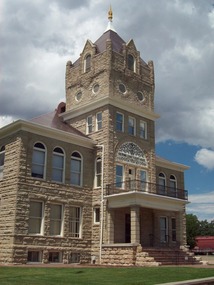
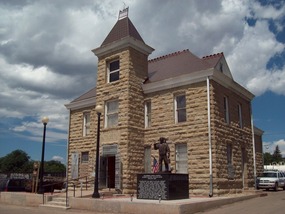
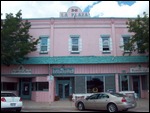

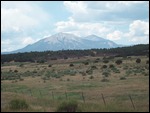
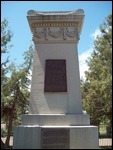
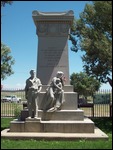
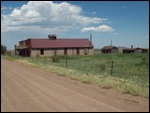
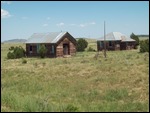
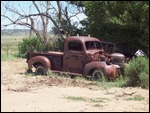
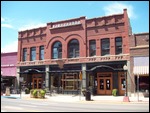

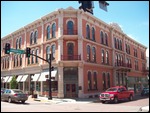

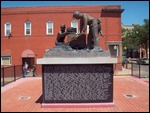
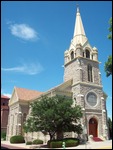


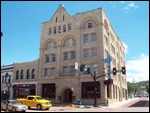
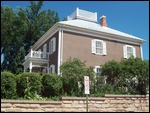
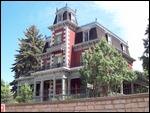
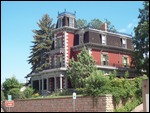

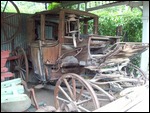

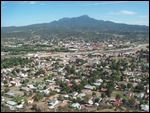
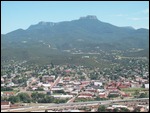
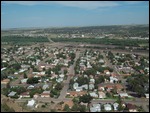
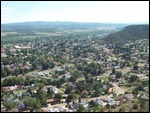
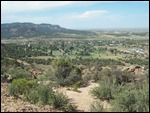
2025-05-22